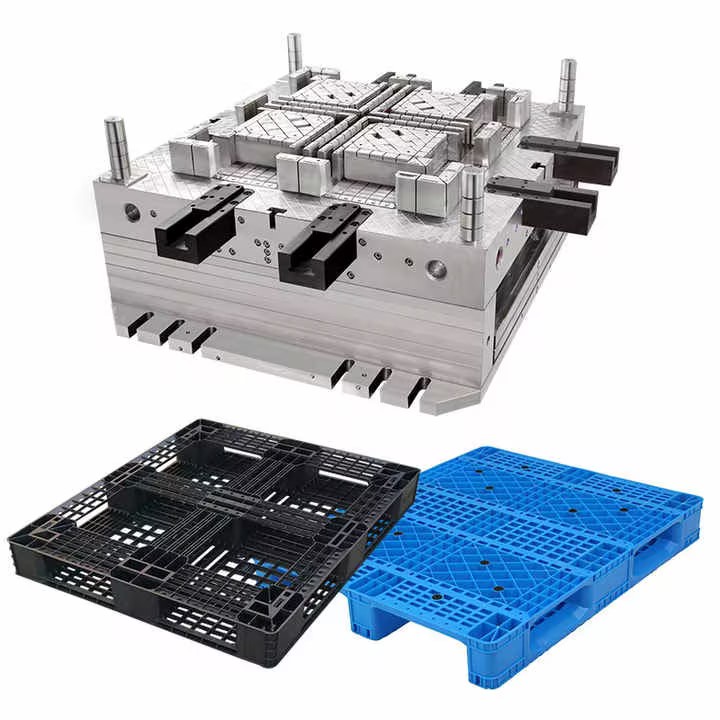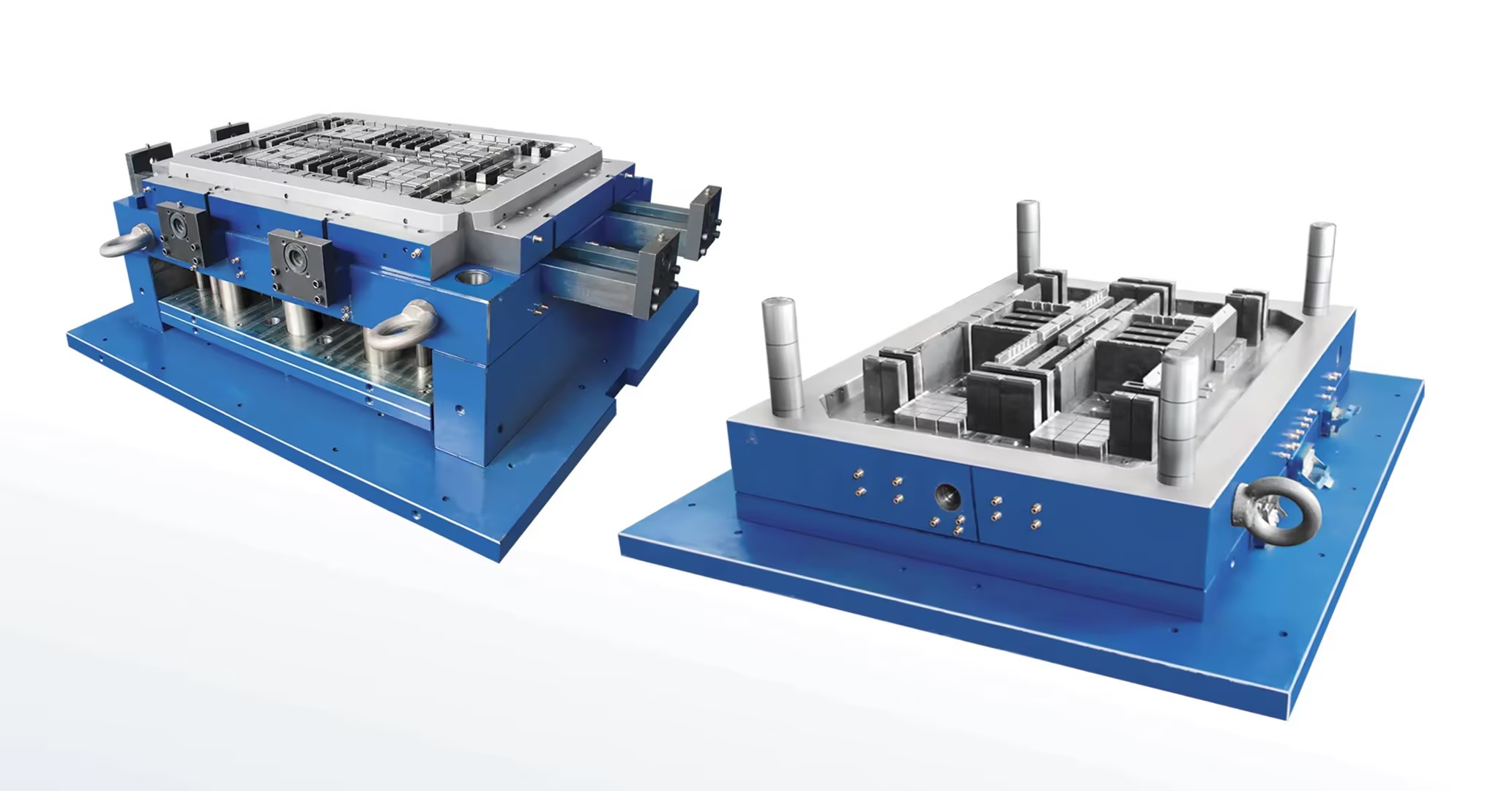Views: 0 Author: Site Editor Publish Time: 2025-02-21 Origin: Site











In the realm of modern logistics and supply chain management, plastic pallets have emerged as a game-changer. These versatile platforms, crafted through advanced moulding techniques, offer a myriad of benefits over their wooden counterparts. They are not only durable and lightweight but also resistant to moisture, pests, and chemicals, making them ideal for a wide range of applications. This article delves into the intricate journey of a plastic pallet, from its conception in the design phase to its final form, ready to revolutionize the way goods are stored and transported.

The design of plastic pallets is a crucial step in ensuring their functionality and efficiency. It begins with a thorough analysis of the specific needs of the industry they will serve. Factors such as load capacity, stackability, and the environment in which the pallets will be used are meticulously considered. For instance, in industries requiring high hygiene standards, pallets with smooth surfaces and no crevices for bacteria to thrive are preferred.
Once the requirements are established, the design phase kicks off, often utilizing sophisticated software to create precise 3D models. These models allow for the simulation of the pallet’s performance under various conditions, ensuring that the final product will meet or exceed expectations. The design process is iterative, with multiple prototypes being tested and refined based on feedback and performance data.
Innovative features such as integrated RFID tags for tracking, ergonomic designs for easier handling, and customizable dimensions for specific applications are increasingly being incorporated into plastic pallet designs. These advancements not only enhance the utility of the pallets but also contribute to more efficient supply chain operations.
The choice of material is paramount in the production of plastic pallets. High-density polyethylene (HDPE) and polypropylene (PP) are among the most commonly used resins, each offering unique benefits. HDPE is known for its strength, resistance to impact, and ability to withstand extreme temperatures, making it ideal for heavy-duty applications. On the other hand, PP is lighter and more flexible, suitable for industries requiring frequent pallet rotation and less weight burden.
Advancements in material technology have led to the development of blends and additives that enhance the properties of these resins. For instance, adding glass fibers to HDPE can significantly increase its load-bearing capacity without adding much weight. Similarly, anti-static additives can be incorporated to prevent the buildup of static electricity, which is crucial in industries dealing with electronic components.
The environmental impact of these materials is also a growing concern. Many manufacturers are now turning to recycled plastics as a sustainable alternative, reducing waste and the carbon footprint associated with new plastic production. This shift not only addresses environmental concerns but also offers cost-effective solutions without compromising on quality and performance.

The transformation of a plastic pallet from a digital design to a tangible product is achieved through advanced moulding techniques, primarily injection moulding and blow moulding. Injection moulding is the most common method used for producing plastic pallets. It involves injecting molten plastic into a precisely designed mould under high pressure. This process allows for the creation of complex shapes and features, ensuring that every detail of the design is accurately replicated in the final product.
Blow moulding, on the other hand, is used for producing hollow pallets that require a lightweight structure without compromising on strength. In this process, a tube of molten resin is inflated inside a mould to form the desired shape. This technique is particularly useful for pallets that need to be stacked efficiently and transported in large quantities.
The choice of moulding technique depends on various factors, including the design complexity, the type of resin used, and the intended application of the pallet. Both methods offer high precision and repeatability, ensuring that each pallet produced meets the stringent quality standards set by the industry.
The journey of a plastic pallet does not end with its production. Ensuring its quality and compliance with industry standards is a critical step that cannot be overlooked. Various tests are conducted to assess the pallet’s performance under different conditions. These include load tests to determine the pallet’s capacity to support heavy loads without deforming or breaking, stack tests to evaluate its stability when stacked, and environmental tests to check its resistance to moisture, chemicals, and temperature variations.
Compliance with international standards such as ISO, EPAL, and CHEP is mandatory for plastic pallets used in global supply chains. These standards specify the requirements for design, performance, and testing, ensuring that the pallets are safe and reliable for transporting goods across different modes of transport and geographical locations.
In addition to standard compliance, many manufacturers are now seeking certifications for their pallets, such as those for anti-static properties, fire resistance, and hygiene standards. These certifications provide an added layer of assurance to customers and help in building trust in the product’s quality and performance.
Once the plastic pallets have passed all quality checks and compliance tests, they are ready to enter the market. The versatility of plastic pallets makes them suitable for a wide range of industries, including food and beverage, pharmaceuticals, automotive, and retail. In the food and beverage industry, for instance, the hygiene and cleanliness of the pallets are of utmost importance. Plastic pallets, being non-porous and easy to clean, are ideal for transporting food products and beverages.
In the pharmaceutical industry, the durability and strength of plastic pallets are crucial for ensuring the safe transport of sensitive products. The ability to customize the size and features of plastic pallets also allows for better space utilization and more efficient storage and transport solutions.
The automotive industry benefits from the lightweight and stackable design of plastic pallets, which helps in reducing transportation costs and optimizing warehouse space. Similarly, the retail sector finds plastic pallets useful for efficient inventory management and streamlined supply chain operations.
The journey of a plastic pallet through advanced moulding techniques is a testament to the innovation and efficiency that modern manufacturing processes can achieve. From the careful selection of materials and the intricate design process to the rigorous testing and versatile applications, plastic pallets have truly revolutionized the way goods are stored and transported in today’s fast-paced global economy. As industries continue to evolve and demand more sustainable and efficient solutions, plastic pallets stand out as a reliable and environmentally friendly choice.
